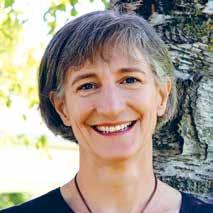
17 minute read
CAMPUS NEWS BRIEFS
The campus welcomed 406 new students this fall: 322 are new first-year students, and 84 are transfer students (up 17% over last fall).
76 % FROM MINNESOTA
30 % AMERICAN INDIAN
22 % FROM OTHER US STATES
2% INTERNATIONAL STUDENTS
40 % FIRST-GENERATION STUDENTS
12 % US STUDENTS OF COLOR (*identifying as Asian, African American/Black, and Hispanic)
25 AVERAGE ACT SCORE
37 % PELL GRANT RECIPIENTS
JANET SCHRUNK ERICKSEN NAMED VICE CHANCELLOR FOR ACADEMIC AFFAIRS AND DEAN

Janet Schrunk Ericksen
The University of Minnesota Morris has named Janet Schrunk Ericksen vice chancellor for academic affairs and dean. An internationally recognized medieval scholar, Ericksen has served the Morris campus since 1998. She has been the interim vice chancellor for academic affairs and dean since 2017.
As interim vice chancellor and dean, Ericksen successfully authored two grants: a Fulbright Scholar-in-Residence proposal to bring an early childhood education expert to Morris in collaboration with the West Central Initiative and an Andrew W. Mellon Foundation Governors’ grant (“Engaged and Engaging Humanities”). In addition, she served as principal investigator on an existing Margaret A Cargill Philanthropies grant (“Sustainability Leaders for the Future”). She worked collaboratively with others on campus to restructure several campus units to better coordinate student services. And she implemented new programming to support early career faculty.
Ericksen began her career at UMN Morris in 1998 as an assistant professor of English. Since then she has held a variety of administrative roles, including director of the Honors Program, chair of the Division of the Humanities, and interim chair of the Division of the Social Sciences. Additionally, she has been an active participant in University of Minnesota governance, including as a University Senator and two terms as a member of the Faculty Consultative Committee.
Ericksen recently authored a forthcoming University of Toronto Press monograph, Reading Old English Biblical Poetry: The Book and the Poem in Junius 11. A University of Minnesota Morris Alumni Association Teaching Award- and Horace T. Morse-Minnesota Alumni Association Award-winning teacher and member of the UMN Academy of Distinguished Teaching, she also continues to be active in the classroom and as a faculty advisor.
“I look forward to Janet’s continued leadership in support of our mission and vision,” says Chancellor Michelle Behr. “Her deep understanding of the Morris campus and community will help us to achieve our aspirations.”
Ericksen will assume the role on July 1, 2020, subject to approval of the Board of Regents.
HIGHER LEARNING COMMISSION ON CAMPUS
The Higher Learning Commission visited UMN Morris in October as part of the campus’s regular ten-year reaccreditation process. UMN Morris last received reaffirmation of accreditation in 2010, and has been accredited continually since 1970.
The two-day HLC visit was conducted by a five-member team of peer reviewers. In addition to requested meetings with specific campus offices, the team provided opportunities for faculty, staff, and students to discuss how the Morris campus meets each of the five HLC Criteria: Mission Integrity: Ethical and Responsible Conduct Teaching and Learning: Quality, Resources, and Support Teaching and Learning: Evaluation and Improvement Resources, Planning, and Institutional Effectiveness
MELISSA BERT NAMED INTERIM VICE CHANCELLOR FOR ENROLLMENT MANAGEMENT

Melissa Bert
Melissa Bert, EdD, will serve as interim vice chancellor for enrollment management (VCEM). The role of the VCEM is to work with campus partners to achieve big-picture enrollment outcomes on campus and is part of a larger plan to reimagine enrollment management at UMN Morris. Bert has served as the campus’s first senior director of institutional effectiveness since 2015 (and will continue in this capacity). There she has provided insight to support strategic planning, assessment and program review, accreditation, and more.
FIVE UMN MORRIS STUDENTS ARE FULBRIGHT SEMIFINALISTS
Five University of Minnesota Morris students submitted Fulbright applications this year. And all have been named semifinalists: Sarah Severson ’20, chemistry/English (Study/Research, Spain), Mara Christensen ’20, elementary education (English Teaching Assistant, Korea), Trina Vue ’20, English (English Teaching Assistant, Thailand), Anika Paulson ’20, psychology (English Teaching Assistant, Germany), and Mia King ’19, biology/psychology/Spanish (Public Health English Teaching Assistant, Spain).
Final awards will be announced later this year.
“As one of the country’s top public liberal arts colleges, UMN Morris provides talented students access to lifechanging educational opportunities,” said Chancellor Michelle Behr. “Our exceptional students are prepared to live as engaged global citizens.”
UMN Morris had two Fulbright finalists in spring 2019: Rayann Wilmot ’19, sociology (English Teaching Assistant, Spain), and Drewe Jefferson ’16, English (English Teaching Assistant, Germany).
Five students were named semifinalists: Emily Kuehn, Jacob Miller, Jefferson, Wilmot, and Mia King.
The Fulbright U.S. Student Program is the largest United States exchange program offering opportunities for students and young professionals to undertake international graduate study, advanced research, university teaching, and primary and secondary school teaching worldwide. The competition is administered on campus through the Academic Center for Enrichment.
CAMPUS VOTING UP IN 2018
Voting on campus was up in the 2018 election, increasing from 31.2% in 2014 to 51.4%. The national average for student voter turnout in 2018 was 39.1%. UMN Morris’s rates earned the campus a platinum seal at the 2019 ALL IN Challenge Awards Ceremony. The ALL IN Campus Democracy Challenge is a nonpartisan, national initiative recognizing and supporting campuses as they work to increase nonpartisan democratic engagement and full student voter participation. The Challenge encourages higher education institutions to help students form the habits of active and informed citizenship, and make democratic participation a core value on their campus.
#WELCOMNGABEL: MORRIS HOSTS NEW UMN PRESIDENT

Gabel met with faculty during her September, 2019, campus visit.
University of Minnesota President Joan T.A. Gabel visited the Morris campus in September, following her inauguration in the Twin Cities. While in town she met with faculty, staff, students, and alumni, getting to know all that UMN Morris has to offer.
ABOUT PRESIDENT GABEL
Joan T.A. Gabel is the 17th president of the University of Minnesota. She leads the University’s mission by honoring its legacy as a place of discovery and opportunity, while emphasizing solutions inspired by Minnesotans that serve our state and change the world. Learn more at president.umn.edu
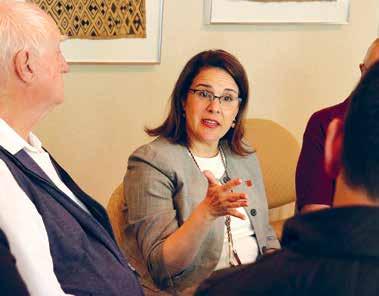
Gabel met with community members in September.
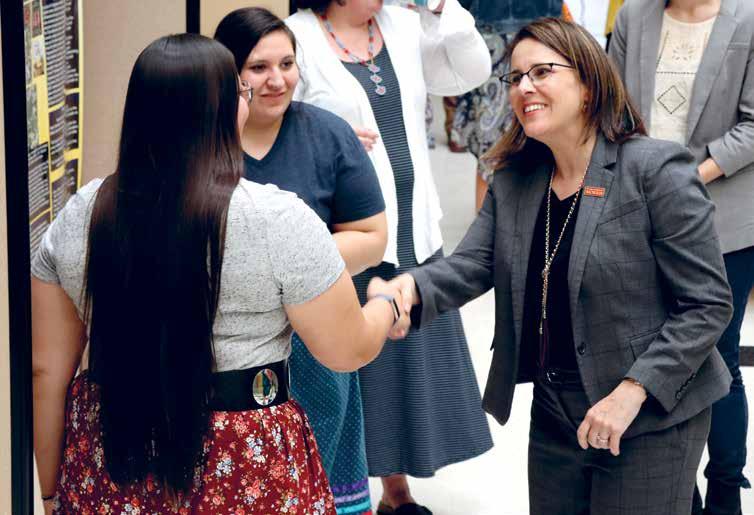
Gabel learned about UMN Morris students' undergraduate research while on campus in September.
—President Gabel on UMN Morris, Voice of Alexandria ”

University of Minnesota President Joan T.A. Gabel
Spotlight: Get to know members of our community who are making a difference in Greater MN
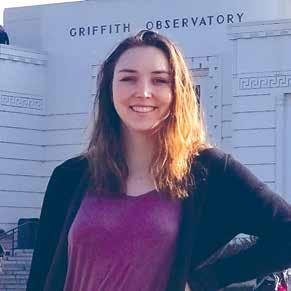
Carol Zurn
CAROL ZURN ’20, CHASKA Van Alstine Geology & Environmental Science Scholarship
FAVORITE CAMPUS MOMENT: Anytime I get to hang out with my friends and relax, watch a movie, talk about whatever is on our minds, that is my favorite moment.
WHAT’S THE BIGGEST REGIONAL PROBLEM YOU WANT TO SOLVE? There is a disregard for the waste that we produce, especially runoff, and how that affects people and ecosystems downstream. Nothing just goes away— we make an impact on ecosystems and other people, and we need to understand that and take steps to reduce our negative impact on the environment.

Argie Manolis
ARGIE MANOLIS Director of Civic Learning and Engagement
NUMBER OF YEARS ON CAMPUS: 20
FAVORITE CAMPUS MOMENT: Receiving a letter from a student I’d had 10 years earlier telling me how my class had changed her life.
WHAT’S THE BIGGEST REGIONAL PROBLEM YOU WANT TO SOLVE? Developing welcoming communities for newcomers and immigrants to small, rural communities.
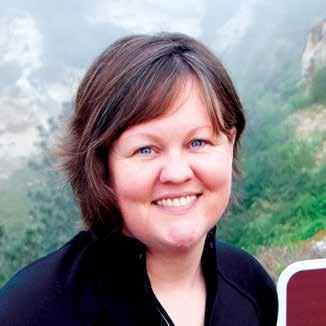
Kimberly Hiland-Belding
KIMBERLY HILAND-BELDING ’01 Speech Communication major, Senior Technical Writer, Fundraising and Community Advocacy Volunteer
FAVORITE CAMPUS MOMENT: Walking to campus after class-shuttering blizzards and shoveling out the door before my Random Sunday Morning radio show on KUMM.
HOW ARE YOU MAKING UMN MORRIS A MODEL FOR REGIONAL RESILIENCE? I started investing in UMN Morris as a way to give back. Time and experience revealed UMN Morris is an incubator for complete people and a whole-picture perspective. The way this campus harnesses both the wind and the concept of building sustainability into ordinary life is an essential foundation for people entering a world still struggling to adapt to the 21st century.
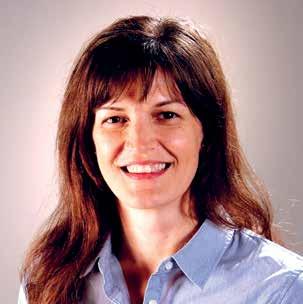
Shelby Loberg
SHELBY LOBERG Assistant Professor of Biology
NUMBER OF YEARS ON CAMPUS: 4
FAVORITE CAMPUS MOMENT: Cheering on the new graduates before they begin their processional.
WHAT’S THE BIGGEST REGIONAL PROBLEM YOU WANT TO SOLVE? Understanding where ticks are and why, to help prevent tick-borne illnesses
SMALL TOWN HEROES

Felicia Galvan
Doug Beasley
Like most city kids, Felicia Galvan ’21 knew nothing about farm equipment. The University of Minnesota Morris anthropology major had been interested in growing and preparing healthful foods since high school, when she joined a Native youth gardening program. But tractors and plows? Not so much.
That changed this past year, when Galvan, a junior from the Twin Cities area, applied for a student internship with the Center for Small Towns. The center paired her with Red Lake nonprofit 4-Directions Development, which tasked her with finding out which kinds of farm equipment would be best for starting a 1- to 2-acre family farm. The results of her research will be used at the Red Lake Reservation training garden, where community members learn about different farming practices. The ongoing goal is to increase access to fresh, organic produce, ultimately achieving “food sovereignty,” or the ability to grow enough food to feed every Red Lake tribal member.
“I learned a lot about farming equipment,” Galvan says. “That was a huge learning curve.” She also attended farming conferences, where she met Minnesota farmers who became informal advisors. The Center for Small Towns (CST) has been matching students like Galvan with Minnesota community groups for 25 years. Towns with populations of 5,000 or fewer have access to the talent and resources at UMN Morris, and students get an opportunity to apply their classroom learning to solving realworld problems and strengthen their connections to greater Minnesota. In spring 2019, CST put 28 students to work on 24 projects around the state.
The projects are diverse—everything from gathering community health data to analyzing the need for a new community center to creating after-school programs for kids. In some cases, students work as research assistants on faculty projects.
“We are serving communities in a pretty broad range of places and spaces,” says Argie Manolis, director of civic learning and engagement. “A former staff member of the center used to say, ‘If you know one small town, you know one small town.’ That’s why we encourage students to do the work of understanding the big picture—the history and the people who live there—and not just the project they’re working on.”
Service Meets Learning
The center started out doing research on small towns, but results from early focus groups revealed that communities didn’t want to be studied; they wanted help with retaining economic and social vitality, promotion and marketing, and technology. So the focus shifted to community requests. Student learning, now equally important, took a backseat.
Today, each community designs and directs the project and determines the student’s role. CST finds a student who’s the right fit. Galvan, for example, had gardening and food co-op experience, and her mother’s family is from the White Earth Reservation. Her interest in Native foods made her an especially good match.
In addition to valuable work experience, students come away with a less tangible but equally important benefit. “Students’ ideas about small towns and small-town life really get turned on their heads,” Manolis says.
This is true of students from larger cities, several of whom have remained in rural communities after graduation, and smalltown students, who may be self-conscious about coming from a place whose name their friends don’t recognize. “They learn that the rural-urban divide isn’t what it appears to be in the media, and that rural communities have this incredible capacity to create change,” she says.
The center promotes student success in another important way—by helping them pay for their education. All internships are paid, and all are entirely funded by grants and gifts.
“We’re incredibly reliant on donor funding,” Manolis says. “And we are very appreciative when one of our alumni chooses to donate, because we know that they finally are in a position where they can support work that was important to them.”
As for Galvan, she says her yearlong internship gave her an appreciation of Minnesota’s tight-knit farming community and rekindled her interest in working the land. Is farming in her post-college future? “I keep getting thrown into this farming work somehow,” she says with a laugh, “so maybe there’s something there. Even if I don’t become a farmer, I definitely think that I will still be in circles where I will try my best to support and advocate for their work.”
This story originally ran in the fall 2019 issue of Legacy, a University of Minnesota Foundation publication. It was written by Laura Silver, a Minneapolis writer. Photo by Doug Beasley.
MAKING THE HEALTHY CHOICE THE EASY CHOICE

Morris farmers market
In an impromptu kitchen inside the public library in the west central community of Morris, Minnesota, food sizzles in a frying pan while a boy of about 7 pokes at his plate, separating the “good” foods from the “bad.” The mushrooms, notably, have migrated on the plate to a spot all their own, and that is where they will stay (He’s never actually tried mushrooms, but is convinced he doesn’t like them).
Despite being a library, the place is anything but quiet. Children are busy slicing, dicing, and smashing vegetables on cutting boards with plastic knives they’ve been provided through a program called Taste Buds, which teaches kids about cooking and nutrition through hands-on experience.
Just outside on the library lawn, the Morris Area Farmers Market bustles with fresh food and goods grown or produced locally by the residents of Stevens County.
Both Taste Buds and the farmers market, as well as a number of other programs, are part of the Morris Healthy Eating Initiative, which began 10 years ago with a simple question: “What if the healthy choice were the easy choice?”
National Problem, Local Solution
About half of American adults (more than 100 million) have one or more preventable chronic diseases, many of which are related to unhealthy eating and a lack of physical activity. Meanwhile, obesity affects almost one in five children, and one in four children from lower socioeconomic groups.
And while the norm is to fault the individual, national research shows that comprehensive changes in a food environment can increase healthy eating for a whole community. In rural areas, especially, Americans are four times less likely to have access to a healthy food retailer than those who live in urban areas.
In Stevens County—home to some of the richest agricultural land in the state—the potential seemed limitless.
What if the Healthy Choice Were the Easy Choice?
Mary Jo Forbord, a registered dietitian and coordinator of the Morris Healthy Eating Initiative at UMN Morris, started building an answer to that question. Working closely with citizens and organizations within Morris and Stevens County (like SNAP Ed, Stevens County Food Shelf, farmers, and the library), she created educational programs about nutrition and helped make fresh fruits and vegetables and other healthy foods more accessible and affordable.
“I’ve been told that no matter what the question is, my answer is always ‘food,’” says Forbord, who is also an organic farmer. Forbord says that the initiative is fostering a community dialogue on the benefits of eating healthier, expanding gardening and farmers markets, and educating residents (especially kids) in how to prepare healthier food.
“By organizing and building a welcoming and vibrant market, we are succeeding in encouraging more farmers to become vendors and more community members to become customers, all of which strengthens the local economy,” says Forbord.
But the real payoff may be in future generations: by pairing kids with University students in all things food, kids are getting interested in food and their own health, says Forbord.
Growing a Generation of Healthy Eaters
Back inside the library, student Erin Kiyukanpi is demonstrating a stir-fry—mushrooms included—as part of today’s Taste Buds programming. While kids get misty-eyed cutting onions (many for the first time), Kiyukanpi is explaining how carrots, peppers, and other vegetables taste and why they might add them to the stir-fry.
Kiyukanpi, a member of the Sisseton Wahpeton Oyate tribe, has been cooking for years. He’s a nontraditional student with plenty of work experience under his belt, especially in food service. Most recently he was food manager at a K-12 tribal school. Today, his own son, 8, is here watching the demonstrations with other kids.

Erin Kiyukanpi teaching children to cook
Kiyukanpi, a Native American and indigenous studies major with a minor in sustainability leadership, points out that “Kiyukanpi” in Dakota means “makes room for him/them,” and that, essentially, is how he sees his role here: he excels at making the kids feel comfortable.
“Kids ask a lot of questions and try a lot of foods they wouldn’t normally try. When you get on their level, take a knee with them and explain things—the benefits of the plant and where it comes from, the different tastes ... they appreciate that and are open to trying new things,” says Kiyukanpi, who after graduation hopes to put his experience to work in the tribal community.
“Some kids come and make the food but won’t try anything … but they’re here, putting their hands in it—getting that exposure. And I think they realize that cooking can be fun—interesting and colorful and easy,” he says.
On the other hand, says Forbord, “We’re finding that a lot of the time kids will lead the way … and their parents are standing back saying, ‘oh, they won’t eat that, don’t give them too much’ and the kids are going, ‘Hey, I helped make that!’”
Nearby, Esmira Alieva ’19 helps a little girl of about 3 tuck in a new recipe and add a sticker to a recipe book each child keeps. Stickers seem to be a key recipe book ingredient, especially for the smaller kids.
Every week it’s a new recipe: strawberry salsa, garlic-scape pesto, and this week, stir-fry, says Alieva. As part of the program, she and half a dozen other students work with the children on topics from cooking to nutrition and gardening.
“You have to make it exciting for them just to get them to even touch the mushrooms,” says Alieva. For many, the very presence of the college students is enough excitement.
“The kids love the University students—they hang on their every word. And if the college students eat that, and they think it’s good ... the kids are in. It’s really quite a wondrous thing to see,” says Forbord
But the program’s effectiveness is also aided because the children are invested: they’ve actually grown many of the vegetables they are using in gardens of their own—little plots of land, each just a few square feet that they can call their own, provided by the University of Minnesota’s West Central Research and Outreach Center. Each child plants the same things (radishes, lettuce, beans, strawberries, and more), and every week they come to harvest.
“They harvested radishes last week,” says Forbord. “You talk about excitement—many of them had never pulled anything out of the ground before—and they were going to eat them no matter what, because they grew them,” she says.
Forbord says that familiarizing kids with a variety of fruits and vegetables when they are young will help them become better eaters and healthier people in the future.
“For so long, people have lamented, oh, nobody cooks anymore, nobody knows what to do with vegetables,” says Forbord. She and the community of Morris are helping change that by growing the next generation of healthy eaters.
This story originally ran on UMNews. It was written by Adam Overland, principal editor/writer, University Relations, UMN Twin Cities.






